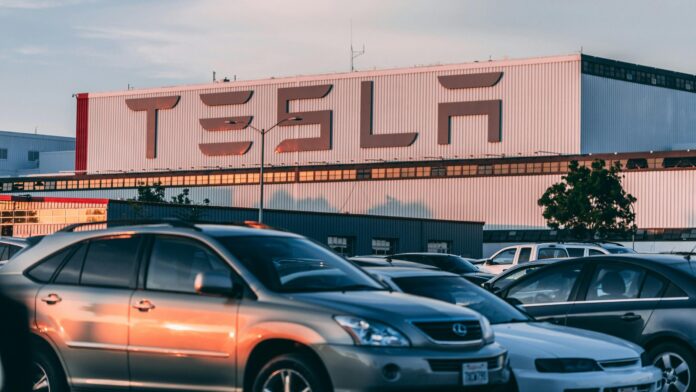How Tesla, BYD, and European Automakers Are Shaping the Future of Mobility
Analysis of strategies of Tesla, BYD, and European automakers in battery technology, charging infrastructure, and market penetration.
Frontpage Journal | Global Report
The global electric vehicle (EV) market has evolved into one of the most fiercely contested arenas in modern industry, driven by environmental imperatives, government policies, and shifting consumer preferences. Tesla, BYD, and leading European automakers are at the forefront, leveraging innovations in battery technology, charging infrastructure, and strategic market penetration to establish dominance. For C-suite executives, investors, and Gen Z professionals, understanding these strategies is critical not only to anticipate market trends but also to position businesses for success in an electrified future.
Tesla remains the market leader by capitalizing on its integrated approach, combining proprietary battery technology, a global charging network, and software-driven vehicle management. The company’s focus on high energy-density lithium-ion batteries and vertical integration allows for cost efficiencies and performance advantages. Tesla’s Supercharger network ensures that range anxiety, a significant barrier to EV adoption, is minimized, creating a seamless user experience. Its strategy of continuous over-the-air software updates also enables performance optimization and autonomous driving enhancements, reinforcing customer loyalty and brand differentiation.
BYD, China’s EV powerhouse, employs a dual strategy of aggressive domestic expansion and international market entry. Its blade battery technology prioritizes safety and longevity, addressing a key concern for consumers and fleet operators. BYD’s ability to manufacture batteries and vehicles in-house at scale has created cost advantages, allowing for competitive pricing in emerging markets. In addition, BYD’s partnerships with ride-hailing services and public transport operators expand the adoption of electric buses and commercial vehicles, aligning economic growth with sustainability objectives.
European automakers, including Volkswagen, BMW, and Renault, are pursuing a multi-pronged approach that combines investment in next-generation solid-state batteries, deployment of pan-European charging networks, and targeted market segmentation. Policies in the European Union, including emission reduction mandates and EV subsidies, have accelerated the shift toward electrification. European manufacturers are integrating EVs into their legacy production lines while also investing in dedicated EV platforms, ensuring scalability and efficiency. Their strategy emphasizes premium EV offerings alongside mass-market affordability, balancing technological leadership with broad consumer reach.
The competitive dynamics of the EV market are reshaping supply chains, energy infrastructure, and industrial policy. Battery manufacturing, raw material sourcing, and rare-earth dependency have become critical strategic considerations. Tesla and BYD are investing heavily in securing lithium, cobalt, and nickel supply chains, while European players are seeking regional sourcing and recycling solutions to mitigate risks and enhance sustainability credentials. Charging infrastructure deployment also drives market adoption, influencing consumer decisions and city-level transportation planning.
Economic and environmental impacts extend beyond automakers. EV adoption reduces urban air pollution and contributes to decarbonization targets, while creating new opportunities in battery recycling, software development, and charging infrastructure. For governments, EV market competition aligns with energy security objectives by reducing dependence on imported oil, fostering domestic manufacturing, and supporting clean technology innovation. Conversely, rapid growth poses challenges such as raw material scarcity, grid capacity constraints, and lifecycle emissions associated with battery production, which must be managed to sustain long-term benefits.
For investors and corporate strategists, understanding the EV market requires analyzing technology roadmaps, strategic partnerships, and policy environments. Companies that invest in research and development, expand global market reach, and integrate sustainable practices will be well-positioned to capture long-term value. Those who fail to anticipate shifts in consumer preferences or regulatory pressures risk losing market share in a rapidly evolving industry.
Gen Z professionals entering the mobility and technology sectors will encounter a landscape where technical expertise, sustainability literacy, and strategic insight are critical. Skills in battery chemistry, renewable energy integration, vehicle software, and supply chain management will be highly sought after, while an understanding of global market dynamics and regulatory environments will be essential for leadership roles.
In conclusion, the race for dominance in the global EV market is reshaping the automotive industry, energy infrastructure, and economic policy worldwide. Tesla, BYD, and European automakers exemplify distinct yet converging strategies focused on technology, scalability, and market penetration. For industry leaders and future professionals alike, success in this space will depend on innovation, operational agility, and the ability to balance environmental responsibility with commercial objectives. The EV revolution is not merely a transformation of vehicles, it is a systemic shift in how industries, cities, and societies approach energy, mobility, and sustainability.




